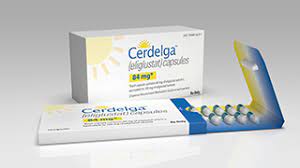Components, Properties, and Specifications of Eliglustat

Components, Properties, and Specifications of Eliglustat
For patients with Gaucher disease, Eliglustat is an important treatment option. Understanding its components, properties, and specifications can help patients use this drug more effectively. This article will provide a detailed introduction to these key aspects of Eliglustat to help patients and their families better understand this medication.
Components
The main component of Eliglustat is Eliglustat itself, with the chemical name N-((1R,2R)-1-(2,3-dihydrobenzo[b][1,4]dioxin-6-yl)-1-hydroxy-3-(pyrrolidin-1-yl)propane-2-yl)octanamide(2R,3R)-2,3-dihydroxysuccinate, the molecular formula C23H35NO5, and a molecular weight of 389.53 g/mol. This small molecule compound works by inhibiting the activity of glucosylceramide synthase (GCS), reducing unnecessary lipid accumulation in the body, and thus improving symptoms of Gaucher disease.
Properties
Eliglustat is typically available in capsule form, with a pearl blue-green opaque cap and a pearl white opaque body, marked with the black letters "GZ02". This capsule form of the drug has good solubility, which mainly depends on the pH of the gastrointestinal tract. For storage, it should be kept in a dry, cool place, avoiding light to ensure the durability of the drug's efficacy.
Specifications
The specifications of Eliglustat usually include different doses to meet the needs of different patients. Generally, Eliglustat capsules come in one dose of 84mg (equivalent to 100mg of eliglustat tartrate). Doctors will adjust the treatment plan based on the patient's specific situation and the severity of Gaucher disease. In addition, the dosage form and dose of the drug should be carefully read in the instructions and followed under the guidance of a physician.
Usage Precautions
When using Eliglustat, patients should be aware of possible side effects such as headache and fatigue, and regularly undergo blood tests during use to monitor treatment effectiveness and adverse reactions. In addition, patients with special medical histories or those using other medications are advised to consult a professional doctor before use to ensure the safety and effectiveness of the treatment. If needed, you can consult DXY customer service.
Q&A Cases
Case 1: How is the dose of Eliglustat determined?
Q: I've been diagnosed with Gaucher disease, and my doctor recommended Eliglustat. How is the dose determined?
A: The dose of Eliglustat needs to be determined based on the results of FDA-approved CYP2D6 gene testing to determine the patient's metabolic phenotype. For fast metabolizers (EM) and intermediate metabolizers (IM), the recommended dose is 84mg orally, twice daily; for slow metabolizers (PM), the recommended dose is 84mg orally, once daily.
Case 2: What are the common side effects of Eliglustat?
Q: What side effects might I experience while taking Eliglustat?
A: In clinical trials, common side effects of Eliglustat (occurring in ≥10% of patients) include fatigue, headache, nausea, diarrhea, back pain, limb pain, and upper abdominal pain.
Conclusion
As an innovative drug, Eliglustat offers new hope for the treatment of patients with Gaucher disease. By gaining a deep understanding of its components, properties, and specifications, patients can better undergo treatment under the guidance of professional medical personnel and improve their quality of life
